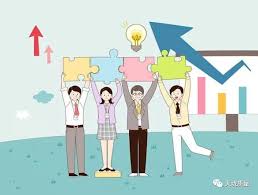Economic Recovery

After a recession, an economic recovery is defined as a period of sustained improvement in business activity. When the economy recovers, gross domestic product (GDP) rises, unemployment falls, and incomes rise.
During a recovery, the economy adjusts to new circumstances, including what caused the recession in the first place and new policies and laws implemented by central banks and governments in response to the crisis.
As unemployed workers find new jobs, bankrupt companies are acquired or spun off, and capital goods, labor, and other productive resources locked up in companies teetering and failing during recessions are diverted to new activities. Recovery is the process by which an economy recovers from losses suffered and prepares for new growth.
Learn About the Recovering Economy
Market economies experience ups and downs for various reasons. Various events such as revolutions, global impacts, and financial crises can affect the economy. Market volatility sometimes follows a pattern similar to cycles or waves, with distinct phases of growth or prosperity, peaks leading to recessions, economic crises, and subsequent recoveries.
After a recession, the economy adjusts and regains some of the gains it lost during the recession. With growth picking up and GDP reaching new highs, the economy turns to actual expansion.
Not every period of slow growth or even decline is considered a recession. The most common rule of thumb in the U.S. is that a recession occurs when GDP is negative for two consecutive quarters.
Recovery Process
Many companies collapsed and failed during the recession, and those that survived scaled back operations to cut costs in the face of reduced demand for their products. Employees are often fired and company assets are auctioned off piece by piece. It is not uncommon for entrepreneurs to be forced to liquidate their entire business.
Some of these assets end up in the hands of other companies, sometimes even startups, who can take full advantage of them. These are sometimes very similar to their previous applications, and sometimes they are completely new areas of business. The essence of economic recovery is the process of combining the products of capital into new combinations, new ownership and new prices after getting rid of bankrupt companies or corporate layoffs during a recession.

Entrepreneurs must consider changing economic conditions when restructuring productive capital and labor into new companies and activities. Real-economy shocks, such as the oil price rise in the 1970s and 2008, led to recessions across economic cycles.
Businesses often have to contend with a weaker lending environment than in the era of cheap credit during the pre-recession bubble. They may need to adopt new technologies and organizational structures. The economic and regulatory environment in which companies operate will almost inevitably go from boom to bust.
Finally, recovery can change the pattern of economic activity, sometimes drastic, sometimes subtle. Just as the body breaks down dead and damaged tissue after an accident to generate new, healthy cells and tissue, the economy heals the damage done in the early stages of the economic cycle by reallocating, recycling, and reusing resources.





